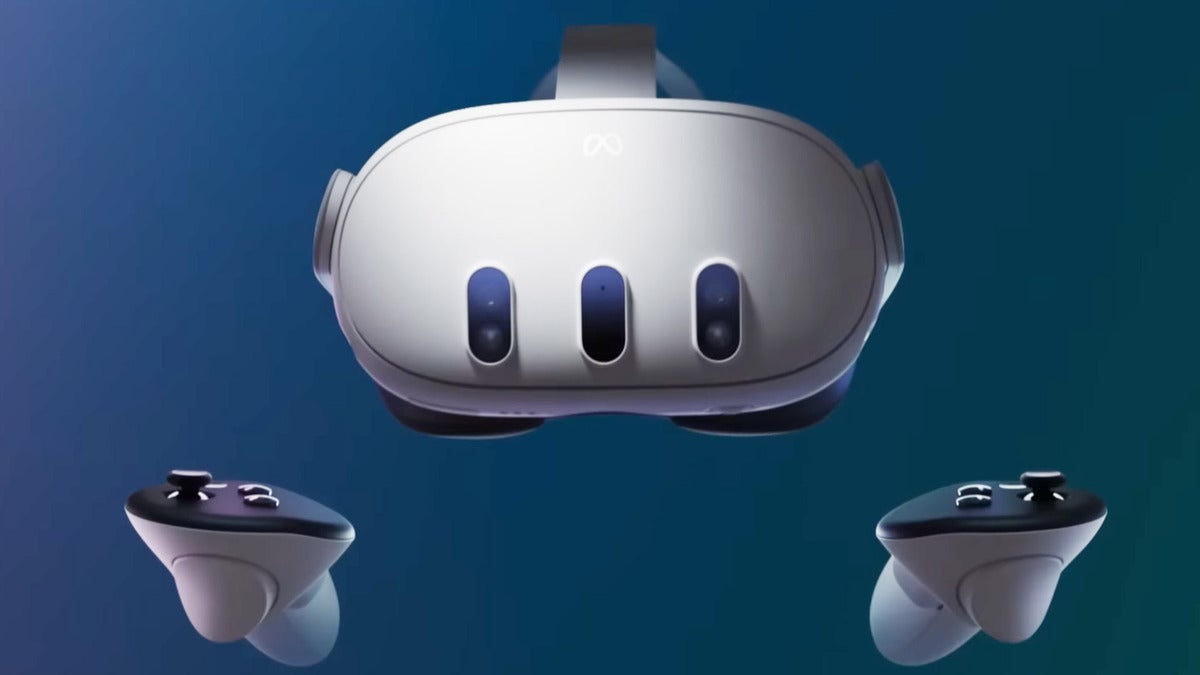Sales of augmented and virtual reality (AR and VR) headsets continue to decline sharply due to weak economic conditions and aging product lines, according to IDC. But upcoming device launches from vendors such as Meta and Apple could help drive a rebound later this year and into 2024, the analyst firm predicts.
Global shipments for AR/VR devices fell 46% year on year in the second quarter of 2023, according to IDC’s latest Worldwide Quarterly Augmented and Virtual Reality Headset Tracker, with commercial shipments falling in line with the overall market (44.4%). This amounts to the fourth successive quarterly decline in shipments, and follows another steep drop-off in the first quarter (54.4% year on year, according to IDC figures from June).
Even so, IDC expects a much stronger final two quarters of 2023, with a full year forecast of 8.5 million devices sold, representing a small 3.2% decrease for the full year compared to 2022. The decline this year – on the back of a weak 2022 – means sales will have settled back to levels seen back in 2017; sales generally peaked in 2021 on the back of Meta’s Quest 2 launch.
Meta continues to dominate the market, with 50.2% share during Q2 2023, while Sony (27.1%) and ByteDance (9.6%), which owns the Pico brand, both gained share on a yearly basis.
IDC
AR/VR device market share 2022-23.
IDC attributed low demand for headsets in the quarter to wider economic conditions and a price increase for Meta’s Quest 2 last year that was reversed in June.
Another factor involves aging product portfolios from several vendors. That issue is set to change in the coming months, however, with Meta preparing to launch its Quest 3 device. and Apple is due to make its long-anticipated entrance to the market with its Vision Pro device early next year, though sales are likely to be limited in part because of supply restrictions; current speculation estimates 400,000 Vision Pro headsets will be produced in 2024.
Despite those constraints, Apple’s headset launch will “bring much needed attention to a small market,” Ramon T. Llamas, research director for mobile devices and AR/VR at IDC, said in a blog post Tuesday.
The outlook for 2024 is significantly brighter. Overall shipments of AR/VR devices is expected to rebound significantly next year, said IDC, growing 46.8% year on year. Commercial sales (which includes businesses, government and education institutions, but not military) are forecast to grow at a similar pace — up 44.1%.
Meta’s Quest 3 will play the most significant role in the commercial market, according to IDC.
“The return to growth in commercial will be driven by the Quest 3 and, to a much lesser extent, the Vision Pro,” Jitesh Ubrani, research manager for mobility and consumer device trackers at IDC, told Computerworld. “The Vision Pro’s high price tag and introduction to the market will ultimately translate to low sales volume, so we expect its…
2023-09-21 07:24:02
Post from www.computerworld.com rnrn



















